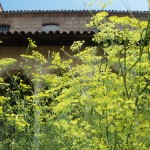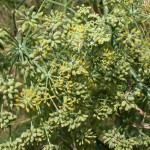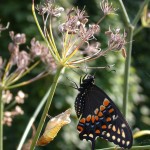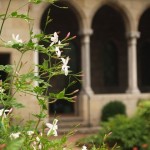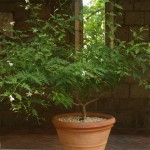Honoring Fennel
Above, from left to right: Fennel flourishing in Bonnefont Cloister Garden in July; green fennel fruits ripening in late summer; umbels of dry fennel fruits at the end of the season.
Let us not forget to honor fennel. It grows
On a strong stem and spreads its branches wide.
Its taste is sweet enough, sweet too its smell;
They say it is good for eyes whose sight is clouded,
That its seed, taken with milk from a pregnant goat,
Eases a swollen stomach and quickly loosens
Sluggish bowels.?? What is more, your rasping cough
Will go if you take fennel-root mixed with wine.???From Hortulus by Walahfrid Strabo. Translated from the Latin by Raef Payne. The Hunt Botanical Library, 1966.
The ninth-century Benedictine abbot Walahfrid Strabo was a gardener as well as a scholar and a poet.?? He praises??the stately and beautiful fennel (Foeniculum vulgare) growing in his monastery garden??for its medicinal virtues, but fennel was also an ancient culinary herb, enjoyed both as a seasoning and a vegetable.
Indigenous to the Mediterranean, fennel was brought to England and Germany by the Romans, and to India and China by Arab traders.?? The Roman natural historian Pliny, writing in the first century, cites fennel in more than twenty remedies.?? All parts of the plant???roots, shoots,??leaves, and seeds???have been used both as food and as medicine. Read more »

